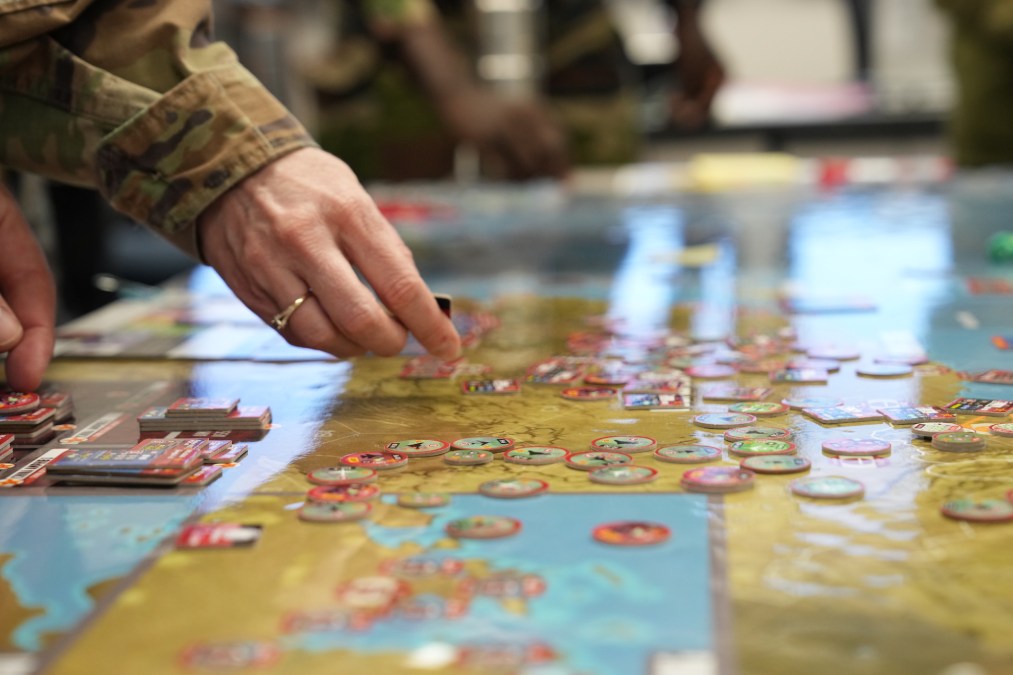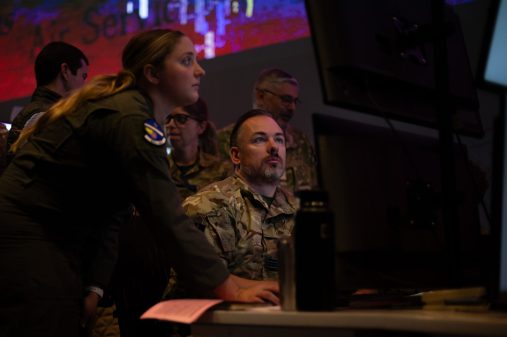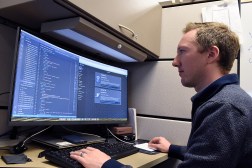Air Force sees opportunities for AI to improve wargaming

The Air Force has been using wargames to flesh out how future AI-enabled platforms could best be employed on the battlefield. But officials are also eyeing another use case — leveraging artificial intelligence to improve wargaming itself.
Gaming plays a critical role for the U.S. military. These efforts serve as “laboratories” for decision-making, analysts at the Center for Strategic and International Studies noted in commentary published in February.
“From the interwar period and Cold War to contemporary debates about countering Russia and China, wargames have been a staple of strategic analysis in the United States. These simulation-driven exercises evaluate theories, assumptions, and strategies related to warfare through the development of hypothetical conflict scenarios. As a result, wargames serve multiple purposes within policy circles. They facilitate dialogue across agencies and among stakeholders, fostering an environment where new ideas can emerge and analysts can evaluate key assumptions,” they wrote.
However, the old-school way of doing them can also be expensive and comes with analytic shortfalls, they noted.
The authors and other observers, including a key Air Force leader, think artificial intelligence can significantly improve the enterprise.
The Air Force Futures office at the Pentagon is responsible for using wargaming and workshops for developing strategy and concepts, integrated force design and conducting assessments of the operating environment, among other tasks.
“I literally just got back from MIT’s AI Accelerator just earlier this week, looking at where they’re helping Air Force Futures out … into using artificial intelligence,” Lt. Gen. David Harris, deputy chief of staff of Air Force Futures, said Friday during a virtual event hosted by the Mitchell Institute for Aerospace Studies.
“The first place that we’re looking at it is within our wargaming methodology. And that is being able to have thousands of runs using either an automated assistant or using somebody with a knowledge assistant, [or] even something as simple as rapid adjudication in some of these games, so instead of just getting three turns against an adversary, I can run thousands of iterations in one turn to understand what some of the optimal solutions are of, hey, maybe if you place your force up into the northern sector versus the southern, it created a different opportunity. And understanding some of that trade space is, I think, where AI is going to be able to help us out a lot,” he said.
Harris plays a key role at Air Force headquarters as a senior leader responsible for strategy, integration and requirements.
He noted that the service is exploring the idea of quickly adjusting levels of autonomy for future systems on the battlefield, depending on the circumstances.
The Air Force is pursuing next-generation drones known as collaborative combat aircraft (CCA), that will be equipped with algorithms and other capabilities. Officials envision CCAs operating as robotic wingmen to manned planes — with each crewed fighter jet overseeing several drones and playing a quarterback type of role — or conducting operations independently in an “untethered” fashion.
“There is another piece of the visit that we did up at MIT. And there’s an interesting connection here between humans operating aircraft, and then just being fully autonomous. There’s a piece in the middle with the human-machine teaming piece of this. And this speaks to a point where when we start looking at, hey, if a pilot is flying with unmanned aircraft around it, what is the connection between those two? As the pilot begins to fatigue after a long flight, can we recognize this and then have that [drone] platform go more into an autonomous mode, versus — hey, the pilot is at peak performance and now I can probably control and maneuver these a bit more? That intersection is an area that’s being explored. And I think it’s an important one as relates to the force design and where we go,” Harris said.






